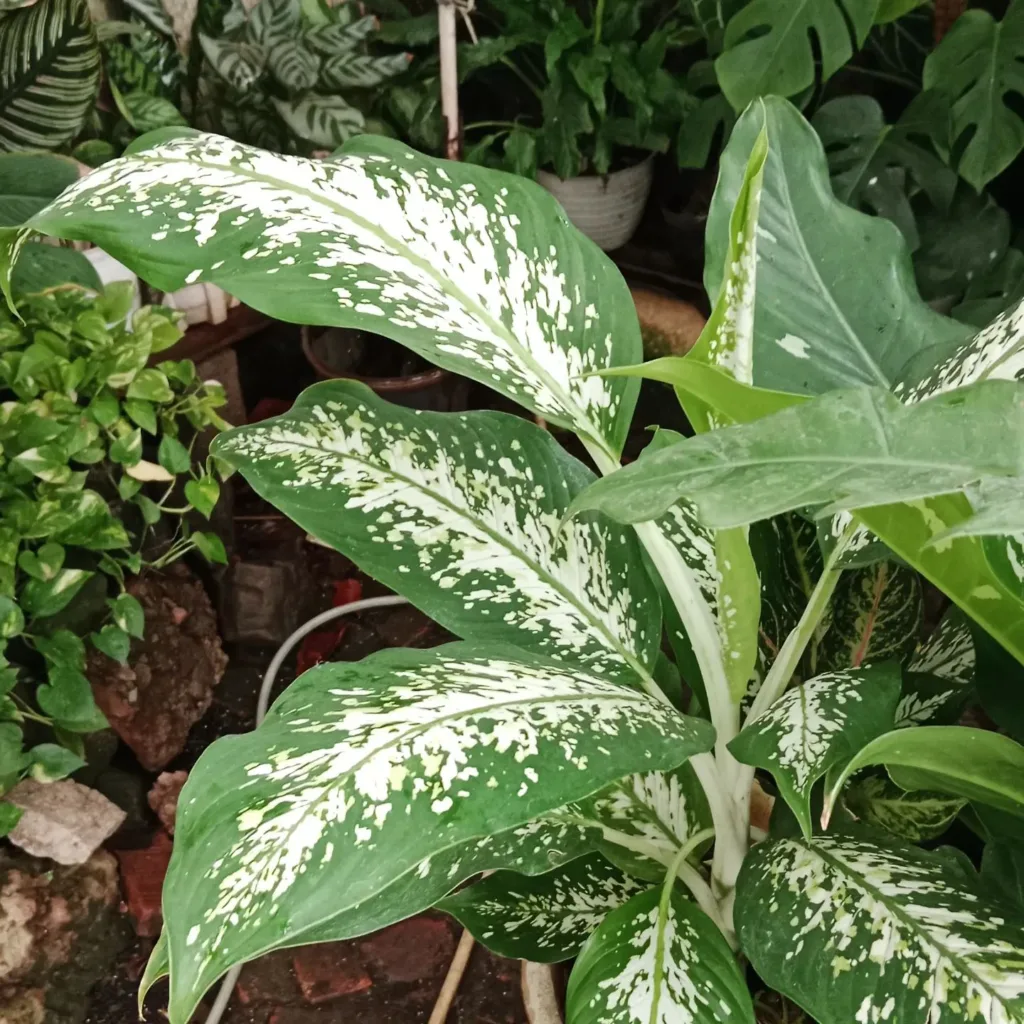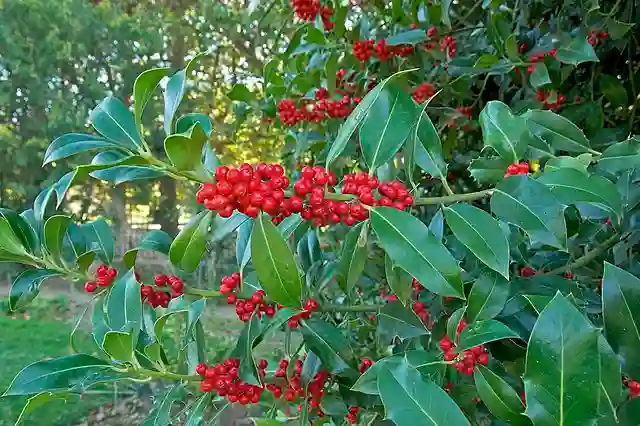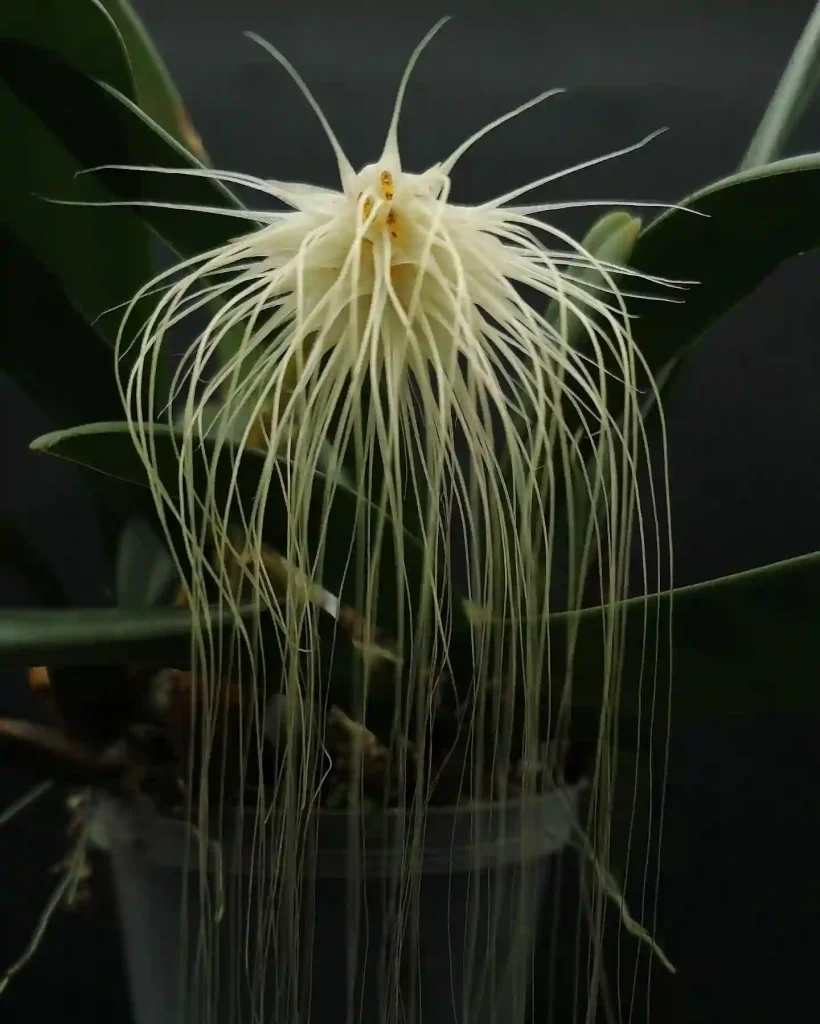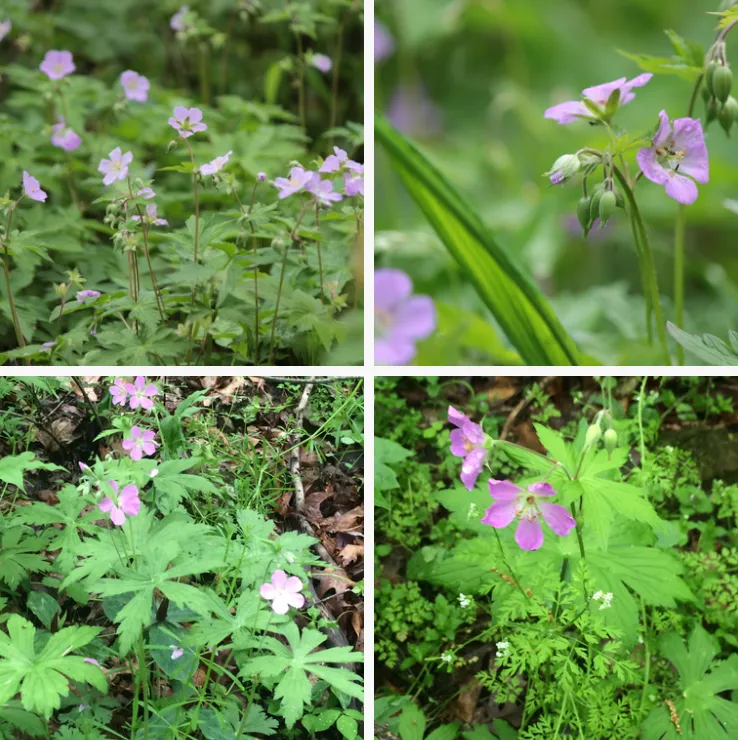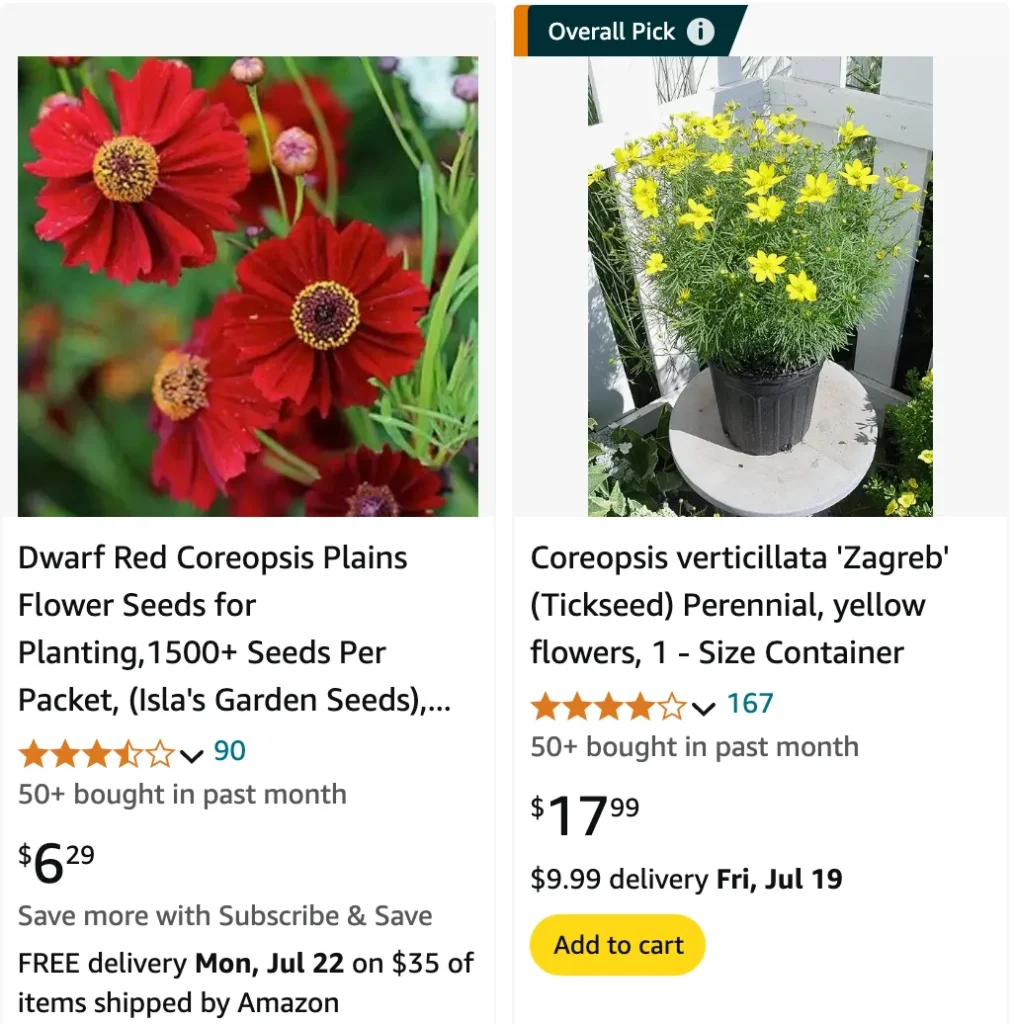
September 20 – Coreopsis
"Coreopsis, the tickseed, represents September 20."
Coreopsis symbolizes cheer and optimism. You bring joy and positivity wherever you go. Like its sunny blooms, your energy is infectious.
Coreopsis: A Gardener’s Guide to the Cheerful Tickseed
Coreopsis belong to the Asteraceae family, also known as tickseed, has become a staple in my garden. These cheerful flowers bring bursts of sunshine with their bright yellow blooms throughout the summer. But with so many varieties and questions swirling around, I decided to delve deeper into the world of coreopsis. Here’s what I’ve learned – a coreopsis FAQ for curious gardeners like you and me.
What is Coreopsis?
Coreopsis is a genus of flowering plants native to North America. They come in various sizes and bloom colors, but most are known for their daisy-like yellow flowers. Coreopsis are low-maintenance perennials, meaning they come back year after year, making them a fantastic addition to any garden.
Coreopsis species
- Coreopsis aristulata LeBlond, Sorrie & Weakley
- Coreopsis auriculata L. Plant FAQs: Coreopsis Auriculata
- Coreopsis bakeri E.E.Schill.
- Coreopsis basalis (Otto & A.Dietr.) S.F.Blake
- Coreopsis bolanosana Panero & Villaseñor
- Coreopsis breviligulata Sagást. & Sánchez Vega
- Coreopsis buchii (Urb.) S.F.Blake
- Coreopsis canescentifolia Sagást.
- Coreopsis falcata F.E.Boynton
- Coreopsis floridana E.B.Sm.
- Coreopsis gladiata Walter
- Coreopsis glaucodes S.F.Blake & Sherff
- Coreopsis grandiflora Hogg ex Sweet Plant FAQs: Coreopsis Grandiflora
- Coreopsis imbricata Sherff
- Coreopsis integra S.F.Blake
- Coreopsis integrifolia Poir.
- Coreopsis intermedia Sherff
- Coreopsis killipii Sherff
- Coreopsis lanceolata L. Plant FAQs: Coreopsis Lanceolata – Lanceleaf Coreopsis
- Coreopsis leavenworthii Torr. & A.Gray
- Coreopsis linifolia Nutt.
- Coreopsis longula S.F.Blake
- Coreopsis maysillesii Sherff
- Coreopsis mollicula Sagást. & Sánchez Vega
- Coreopsis multifida DC.
- Coreopsis nudata Nutt.
- Coreopsis nuecensis A.Heller
- Coreopsis nuecensoides E.B.Sm.
- Coreopsis paludosa M.E.Jones
- Coreopsis palustris Sorrie
- Coreopsis peruviana Sagást.
- Coreopsis piurana Sherff
- Coreopsis poloe Sagást. & Zapata
- Coreopsis pubescens Elliott
- Coreopsis rosea Nutt. Plant FAQs: Coreopsis Rosea – Pink Coreopsis
- Coreopsis spectabilis A.Gray
- Coreopsis teotepecensis Paray
- Coreopsis tinctoria Nutt. Plant FAQs: Coreopsis Tinctoria
- Coreopsis wrightii (A.Gray) H.M.Parker ex E.B.Sm.
How to Care for Coreopsis?
Coreopsis are superstars when it comes to ease of care. They thrive in full sun and well-drained soil. Water them regularly during their first growing season, but once established, they’re quite drought tolerant. To encourage continuous blooms, deadhead spent flowers (more on that later!).
How to Propagate Coreopsis?
There are two main ways to propagate coreopsis: division and seeds. Division is best done in early spring or fall. Simply dig up a mature plant and carefully divide it into sections, each with healthy roots and shoots. Seeds can be sown indoors in late winter or directly outdoors in spring.
Do Deer Eat Coreopsis?
Fortunately, deer tend to leave coreopsis alone. The foliage has a bitter taste that deters these browsing herbivores. This makes coreopsis a great choice for gardens prone to deer problems.
Does Coreopsis Spread?
Yes, coreopsis can spread! Some varieties spread more vigorously than others. Coreopsis grandiflora is known for spreading by underground rhizomes, while others may self-seed readily. This spreading habit can be a plus if you want to fill out a large area, but be mindful if you have limited space.
How to Deadhead Coreopsis?
Deadheading simply means removing spent flowers. This encourages the plant to put its energy into producing new blooms instead of setting seed. Use sharp pruners to snip off the flower head just below the faded bloom.
Do Rabbits Eat Coreopsis?
Rabbits, unlike deer, may find coreopsis more appealing. While they’re not the top choice on the rabbit buffet, it’s not unheard of for them to nibble on the foliage, especially during harsh winters when food is scarce. If rabbit damage is a concern, consider planting coreopsis in raised beds or using protective fencing.
How Tall Do Coreopsis Grow?
Coreopsis come in a range of heights, from dwarf varieties reaching just 12 inches to taller selections reaching up to 3 feet. When choosing coreopsis for your garden, consider the overall design and plant them towards the back of the border for taller varieties or at the front for more compact ones.
What Do Coreopsis Seeds Look Like?
Coreopsis seeds are small and black, resembling tiny ticks, hence the nickname “tickseed.” They form behind the spent flower heads.
What to Plant with Coreopsis?
Coreopsis pair beautifully with many other flowering plants. Here are a few ideas:
- Salvia: The blue or purple blooms of salvia create a stunning contrast with coreopsis’ yellow.
- Echinacea (Coneflower): These daisy-like flowers come in various colors and bloom alongside coreopsis throughout the summer.
- Lavender: The fragrant purple flowers of lavender complement the sunny yellow of coreopsis and add a touch of elegance.
- Grasses: Ornamental grasses add texture and movement to the garden, creating a harmonious backdrop for coreopsis.
When Do Coreopsis Come Back?
Coreopsis are perennials, so they’ll die back in the fall and return the following spring. In warmer climates, some varieties may even stay evergreen.
Is Coreopsis Invasive?
While coreopsis can spread readily, they’re not generally considered invasive. However, some varieties may self-seed more aggressively than others. If you’re concerned about invasiveness, choose a less vigorous variety or deadhead spent flowers diligently to prevent unwanted seedlings.
Can Coreopsis Grow in Shade?
Coreopsis prefer full sun for optimal blooming. They may tolerate some light shade, but flowering will be reduced.
Do Bees Like Coreopsis?
Absolutely! Bees are drawn to the bright yellow flowers and plentiful nectar of coreopsis. Planting coreopsis is a great way to support these vital pollinators.
Does Coreopsis Attract Butterflies?
Yes, butterflies also find coreopsis irresistible. The cheerful blooms and easy landing spots make them a butterfly magnet.
Coreopsis vs Cosmos
Both coreopsis and cosmos are daisy-like flowering plants that bring sunshine to the garden. Here’s a breakdown of the key differences:
- Bloom Time: Coreopsis typically blooms from early summer to fall, while cosmos tend to flower later in the summer and into early autumn.
- Height: Coreopsis come in a wider range of heights, from dwarf varieties to taller selections. Cosmos generally grow taller than coreopsis, reaching up to 6 feet.
- Leaf Form: Coreopsis foliage is typically thread-like or ferny, whereas cosmos leaves are more feathery.
- Maintenance: Both are low-maintenance, but cosmos may require more staking due to their taller stature.
Coreopsis vs Black-Eyed Susan
Black-eyed Susan (Rudbeckia hirta) is often mistaken for coreopsis due to their similar daisy-like yellow flowers with dark centers. However, there are key distinctions:
- Size: Black-eyed Susan is generally larger than coreopsis, with bigger flowers and reaching taller heights.
- Bloom Time: Black-eyed Susan flowers typically earlier in the summer compared to coreopsis.
- Leaf Form: Black-eyed Susan has broader, coarser leaves compared to the finer foliage of coreopsis.
Coreopsis vs Blanket Flower
Blanket flower (Gaillardia spp.) shares similarities with coreopsis, but here’s how they differ:
- Flower Color: Blanket flower comes in a wider range of colors beyond yellow, including red, orange, and bi-colored varieties.
- Bloom Time: Blanket flower has a longer blooming season than coreopsis, sometimes flowering from early summer right through to fall frost.
- Leaf Form: Blanket flower foliage is more lance-shaped compared to the thread-like or ferny leaves of coreopsis.
Coreopsis vs Gaillardia
Gaillardia is another name for blanket flower, so these terms refer to the same plant.
Coreopsis vs Marigold
Marigolds (Tagetes spp.) are another popular choice for summer blooms. Here’s a comparison:
- Flower Form: Marigolds have a more compact, rounded flower head compared to the daisy-like form of coreopsis.
- Leaf Form: Marigold foliage is more feathery and aromatic compared to the thread-like or ferny leaves of coreopsis.
- Lifespan: Most marigolds are annuals, meaning they complete their life cycle in one season, while coreopsis are perennials.
By understanding these distinctions, you can choose the perfect addition to your garden based on your desired bloom time, height, and overall aesthetic. Now, go forth and add some coreopsis cheer to your sunny space!
If i die, water my plants!
